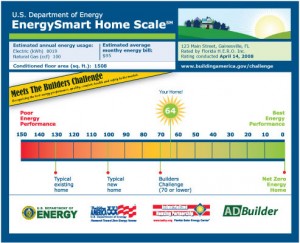COCOA, Mar. 18, 2010 – Ninety public schools in Florida will be competitively selected to participate in the SunSmart Schools E-Shelter (Emergency Shelter) program, administered by UCF’s Florida Solar Energy Center (FSEC). Each school will receive a solar electric system with battery backup – complete with installation, educational resources and materials, training for school personnel, and professional development for teachers. Schools must submit an online application by April 12, 2010 to qualify for selection.
Read more
Press Release
FSEC to Oversee Installation of Solar on 90 Emergency Shelter Schools
COCOA, Feb. 18, 2010 – The Florida Solar Energy Center at the University of Central Florida will administer a $10 million state program to install solar energy systems on 90 public schools.
The SunSmart Schools E-Shelters (Emergency Shelters) program, unveiled this week by Gov. Charlie Crist, is expected to boost Florida’s clean energy sector by providing job opportunities to local installers and vendors. The grant money will come from federal economic stimulus funds.
The solar electric systems, also known as photovoltaic (PV) systems, will provide power during outages, offset electricity costs to the school during normal operations and reduce greenhouse gases. Read more
EnergyGauge® Summit Premier 3.22 Features LEED® (Version 3) 2009 Energy Optimization Calculation

EnergyGauge Summit is easy-to-use, state-of-the-art software that offers construction-industry professionals substantial time savings while completing required energy modeling calculations for LEED® projects.
The Florida Solar Energy Center® (FSEC®), a research institute of the University of Central Florida, just released EnergyGauge Summit Premier 3.22. FSEC will be exhibiting the software at the GreenBuild Expo in Phoenix November 10 – 12, 2009. This state-of-the-art software provides construction-industry professionals with the opportunity to substantially reduce the time required to complete energy modeling for the commercial construction LEED® rating system. It also offers a time-saving federal tax deduction qualification feature.
The new version of Summit Premier contains several improvements and additional features that make it more functional in its use for LEED and other calculations. They include:
- Addition of the LEED (version 3) 2009 calculation feature for Energy Optimization Credit
- Updated federal tax deduction calculation as per IRS Notice 2008-40 (amplification to IRS Notice 2006-52)
- New input fields for various building envelope and system components to allow for more accurate modeling
- Additional schedules for HVAC system control
- DOE-2 based system sizing feature (beta version)
As President Obama Helps Commission Solar Plant, UCF Solar Leader Receives National Recognition

ORLANDO, Oct. 27, 2009 — As President Barack Obama hails the opening of the nation’s largest solar photovoltaic power plant in DeSoto County, a University of Central Florida engineer credited with making the Florida Solar Energy Center (FSEC) a world leader in renewable energy research is being honored by a national council.
David Block, director emeritus of FSEC, has received a special recognition award from the Interstate Renewable Energy Council. The council, which Block helped found as the Interstate Solar Coordination Council in 1982, develops renewable energy programs and policies designed to lead to adoption of uniform guidelines, standards and quality assessment.
New Home Sales Robust for Some Energy-Efficient Florida Builders
It’s no surprise that in today’s ailing market, new home sales are down. What is surprising is that construction is on the rise for six Florida homebuilders.
In partnership with one of the U.S. Department of Energy’s Building America teams, led by the University of Central Florida’s Florida Solar Energy Center (FSEC), these successful homebuilders are building super energy-efficient homes. They are achieving a standard met by fewer than one of every 1,000 new homes built in Florida since 2007.
Homes consume about 35 percent of the electricity produced in the United States. Homes are also responsible for more than 20 percent of the U.S. emissions of carbon dioxide, a significant contributor to global warming. Building America’s goal is to develop cost-effective solutions that reduce the average energy use of housing by 40 to 100 percent.

Similar to an automobile’s miles-per-gallon sticker, energy-efficient homes can have an energy-efficiency rating called the EnergySmart Home ScaleSM (E-Scale), which is based on the nationwide Home Energy Rating System’s HERS Index. A home with an E-Scale of zero generates as much energy as it consumes on an annual basis. While most existing homes have an E-Scale of 130 or higher, typical new homes in Florida have an E-Scale of about 90.
Read more